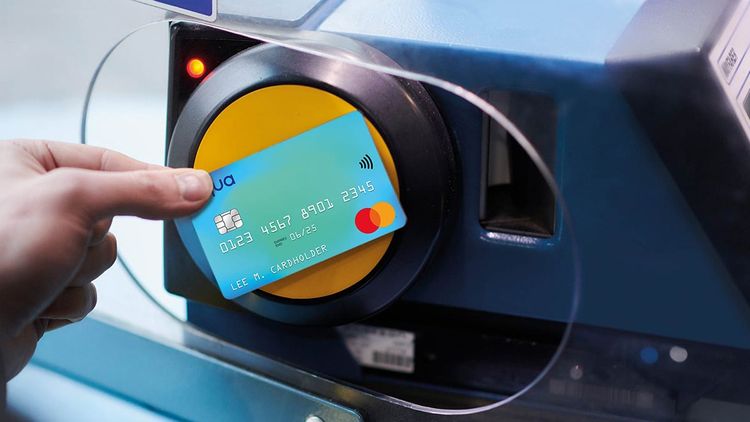History of Credit Cards
Ever wondered when credit cards were invented? Explore the history of credit cards, and learn more about how they have evolved, and what might come next.

Although the roots of credit cards can be traced back to the late 1800s, they didn’t take off as a concept in the UK until the mid-20th century.
Today, they’re used by millions of people as a modern and flexible way of borrowing money, all with the added benefit of potential perks and rewards along the way.
In this article, we’ll guide you through the journey of credit cards – from inception and how they’ve evolved, to what might change in the future.
When were credit cards invented?
The idea of a credit card was born in 1949 when businessman, Frank McNamara, was dining out with clients at Major’s Cabin Grill, New York.
When the bill arrived, Frank realised he’d forgotten his wallet and had no way to pay. Determined to never let this scenario happen again, he teamed up with his lawyer, Ralph Schneider, to develop the first-ever charge card.
Although this was a revolutionary shift in payment options at the time, other forms of borrowing money preceded McNamara’s idea.
In 1928, for example, large department stores would give credit to trusted customers in the form of special coins, keyrings, and other objects resembling dog tags (otherwise known as charge plates).
By the 1950s, borrowing money became a more universal financial tool, with companies such as American Express and multiple national banks making credit cards available to a wider audience.
What came before credit cards?
The concept of borrowing money can be traced back to ancient times when debt instruments known as ‘tally sticks’ were used to indicate money owed to a lender.
When money was borrowed, notches were cut into the wooden tally stick, acting as a modern-day bank statement. It was then snapped in half so the lender and debtor both had a record of the debt.
The security of the system existed in the knowledge that no two sticks look the same once they’re broken in half. That way, there was no room for error when it came to repaying the right amount.
Later, in 1865, charge coins made from metal or celluloid would be issued by merchants to their top clients. They would function like a store card or credit card in that payments could be settled later down the line.
Fast-forward to the mid-20th century and charge plates would become the new way to purchase goods on credit: a rectangular sheet of metal issued by merchants, embossed with a customer’s details.
It wasn’t until 1958 that the first revolving credit card was introduced by American Express and posted to 60,000 customers in the Fresno area of California.
Shortly thereafter, the first known cases of credit card fraud would be reported, paving the way for new security features, such as the magnetic strip created by IBM engineer, Forrest Parry, in 1960.
New features of credit cards over time
Over the past century, credit cards have evolved to offer more convenience, compatibility, and security features. Just some of the enhancements include:
Magnetic strips to PIN authentication to help protect your account from unauthorised spending.
Biometric authentication using fingerprints or facial recognition to further enhance account security.
SMS alerts to make you aware of any activity on your account, and to instantly detect suspicious activity.
Contactless payments to simplify paying for things with a single tap on compatible terminals.
Virtual cards to manage online purchases through an app instead of physically using a plastic card.
Mobile wallet compatibility for added convenience with all your cards stored in one digital place.
Some credit card providers such as Aqua also come with fraud protection features which include round-the-clock account monitoring, a dedicated fraud team, and the ability to freeze your card through an app.
You’re also provided with tools and tips on how to keep your account safe, as well as advice to stay on top of your finances, build better credit, and have a healthier relationship with money.
What’s the future of credit cards?
Credit cards have continued to evolve since they were first introduced to the public, and it doesn’t look like their innovation is going to slow down anytime soon.
With every development leaning towards a faster, safer, and more convenient way to pay, magnetic strips, signatures for purchases, and other dated features are slowly becoming more obsolete.
In their place is a host of existing and speculative developments such as biometric authentication, digital-only credit cards, and contactless payment – all of which limit the need for a physical card.
To help improve your credit score, some lenders have also launched support apps and tools like our very own Aqua Coach in the Aqua app. It helps to track your score, learn what makes a difference to it, and plan your next best move to help improve it.
From their inception, credit cards have evolved from metal plates to the contactless, app-friendly payment methods we all know today. With an Aqua credit card, you also get the power to improve your credit score with access to Aqua Coach, our free credit-building tool designed to help Aqua customers get better at credit management.
39.9% APR Representative (variable)
Check your eligibility (without impacting your credit score).
Failure to make payments on time or to stay within your credit limit means that you will pay additional charges and may make obtaining credit in the future more expensive and difficult.
Contributors

Hayley Bevan
Hayley is an editor at Aqua.

Victoria Smith
Victoria is an editor at Aqua.
You might also like
Slide 1 of 3
How credit card payments work
Learn how credit card payments work, how and why credit card charges are applied and how to manage payments.
Victoria Smith

Advantages of using a credit card
From spreading costs to building credit history, learn the benefits of credit cards when used responsibly.
Vanessa Stewart

How many credit cards should you have?
Learn more about how many credit cards you should own. Discover the pros and cons of multiple credit cards and find...
Hayley Bevan
The smart way to build better credit
Aqua is the credit card that gives you the power to improve your credit score
